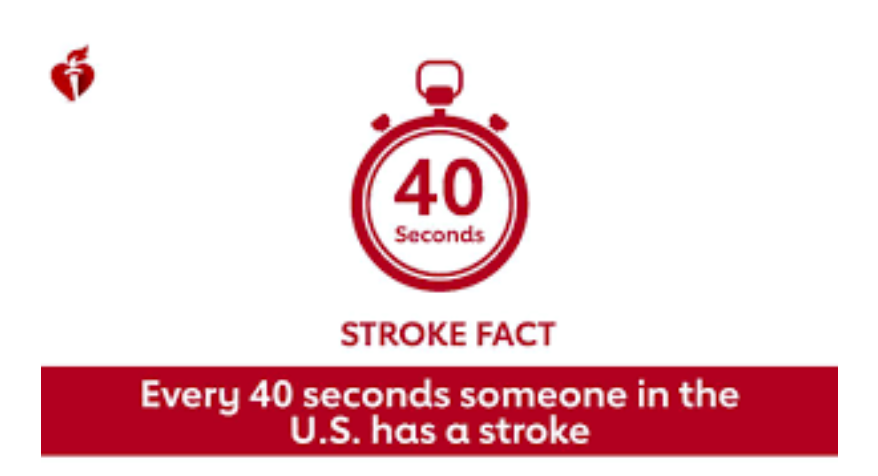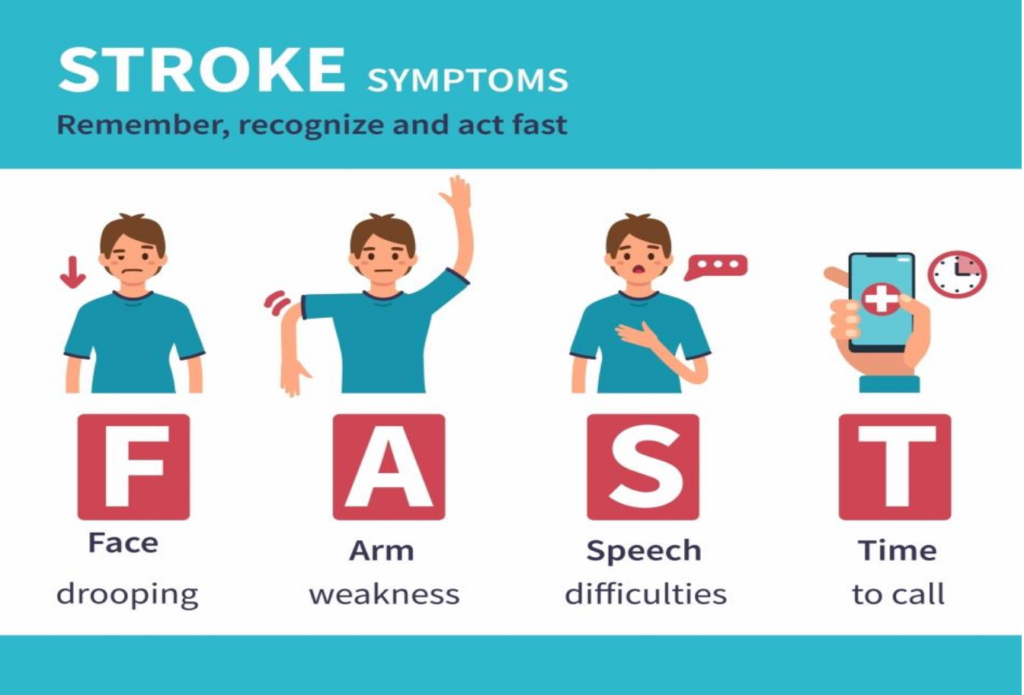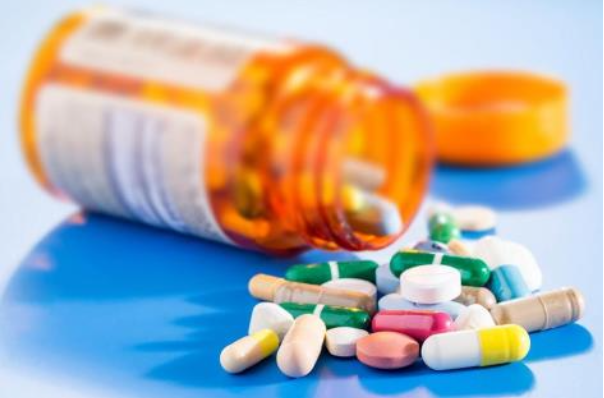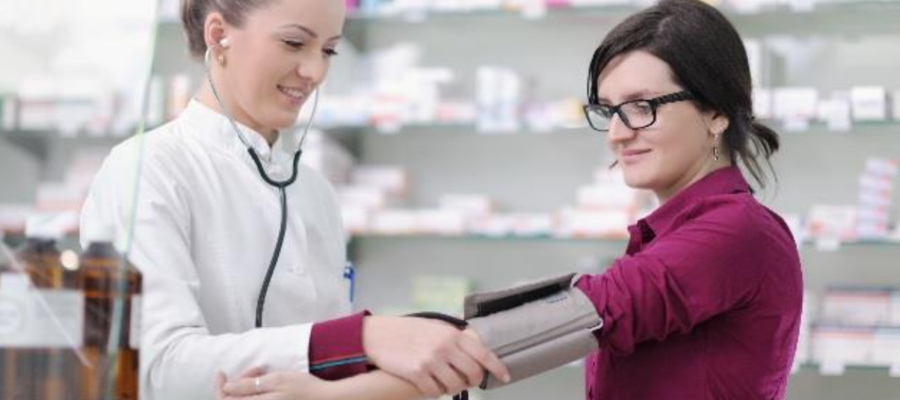Author: Karen J. Zhang, PharmD Candidate, Oregon State University
Every day, we serve patients who trust us to fill their prescriptions, check their blood pressure, or answer questions about a “weird feeling” they can’t quite explain. Often, it’s these routine moments that offer the biggest opportunity to make a life-saving difference.
May is Stroke Awareness Month, a timely reminder of the critical impact strokes can have on individuals, families, and healthcare systems. While the spotlight is often on emergency departments, we know that much of stroke care happens well before and long after that hospital visit—right here in our pharmacies.
Stroke remains one of the leading causes of death and long-term disability globally. Every 40 seconds, someone in the U.S. experiences a stroke, and as community pharmacists, we’re in a powerful position to help prevent strokes, recognize it when it’s happening, and support recovery once it’s over. The need for proactive prevention and education is more urgent than ever, and you are on the frontlines – uniquely positioned to educate, empower, and make a lasting difference.

1. The Prevention Work You’re Already Doing Matters More Than You Think
You don’t need to add something new to your plate—you’re already doing things that reduce your patients’ stroke risk every day. What might feel like small, routine interactions can be the turning point that prevents a major event:
- You check in about missed doses of warfarin or a DOAC during a refill
- You catch elevated blood pressure during a quick screening or help someone pick out a home monitor
- You reinforce medication adherence and healthy habits
- You explain why their new statin is important even though they “feel fine”
- You recommend a nicotine patch along with gum or lozenges to help patients quit smoking

These small moments are often the first, and only, intervention a patient might get before something serious happens. And that makes your role in stroke prevention not just valuable—but vital.
2. A Call to Action: Recognizing Stroke Signs When Patients Walk Through Your Door
How often does someone come in saying, “I feel dizzy” or “My arm’s a little numb—it’s probably nothing”? Sometimes it is nothing—but other times, it’s the beginning of a stroke—and every second counts. As pharmacists, we can’t diagnose. But we can recognize when something seems off and act quickly. Trusting your instincts in those moments could save a life.
Remember F.A.S.T.:
- Face drooping
- Arm weakness
- Speech difficulty
- Time to call 911

We all know this, but in the middle of a busy shift, it’s easy to second-guess ourselves. In independent, community pharmacies, especially in rural areas, we might be the only healthcare professional someone talks to that day. And when time is brain, pharmacists are first responders in the pharmacy. If stroke symptoms are present, call 911 right away. Stay with the patient, monitor their breathing and consciousness, and take note of key details: when symptoms began, their medical history, and any medications they are taking. Share this information with emergency responders when they arrive.
Don’t underestimate the power of your gut feeling and your ability to take action when it matters most.
3. The Complexity of Recovery—and Where We Step In
Leaving the hospital is just the beginning of recovery for stroke survivors. Many return home overwhelmed with a stack of prescriptions, new routines, follow-up appointments, and a lot of uncertainty. That’s where pharmacists become a critical part of the care team.
Here’s how you help ease that transition—often in ways no one else can:
- You clarify what’s changed at the counter—what’s new, what’s stopped, and what still needs to be taken.
- You catch duplications or drug-drug interactions that no one else caught
- You help patients navigate new and complex regimens that might include: clopidogrel, apixaban, lisinopril, atorvastatin—sometimes all at once.
- You reassure family members who are unsure how to support recovery

Syncing patients’ medications or taking an extra minute to check in at the pickup counter can go a long way. In the chaos of recovery, pharmacists bring clarity. You’re not just dispensing medication—you’re offering stability, reassurance, and a steady presence when patients and families need it most.
4. Get Involved This May—Even with Limited Time
We’re all busy. But small actions can have a big impact during Stroke Awareness Month and beyond. Here are a few quick, high-impact ways to engage patients without overloading your day:
- Offer free blood pressure checks one day a week this month or host screening events throughout the year
- Post a 10-second tip on social media: “Atrial fibrillation increases stroke risk 5x—ask us if your medications are working for you.”
- Include F.A.S.T. in your morning huddles
- Put up a flyer at checkout: “Do you know your stroke risk?” can spark meaningful conversations
- Partner with a local clinic to share stroke education materials and recovery resources in your community
Resources to share with your patients:
- 5 Key Facts About Stroke
- F.A.S.T. Stroke Warning Signs
- Prevent Another Stroke
- High Blood Pressure and Stroke
- Risk Factors for Stroke – What You Can Control
- Lifestyle Changes to Prevent Stroke
Stroke awareness can be woven into the day-to-day care you already provide. These small moments of education and prevention, grounded in the trust your patients already have in you, are where real change begins.
Conclusion: The Frontline Starts Here
In our communities, we’re the bridge between everyday life and life-saving care. We may not wear scrubs or be at the bedside, but we know our patients—their habits, their concerns, their routines. That familiarity gives us a powerful edge in the fight against stroke.
This May, let’s lean into that connection. Let’s educate, intervene, and follow up. Because when a patient’s life changes in an instant, it’s often the pharmacist who was there before it happened—and still thereafter, helping them find their way forward.
Let’s BE FAST and be proactive—not just for the month, but year-round—because every second counts.
References:
https://www.stroke.org/en/about-the-american-stroke-association/stroke-awareness-month
https://www.cdc.gov/stroke/data-research/facts-stats/index.html
https://www.stroke.org/en/about-stroke/stroke-risk-factors/risk-factors-under-your-control
https://www.stroke.org/en/about-stroke/stroke-risk-factors/stroke-risk-assessment

